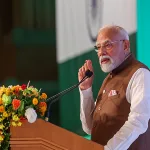Community involvement is key to sustainable development as it is the local communities and societies that are the key stakeholders in tourism. That is why World Tourism Organisation (WTO), the global body that defines the policy contours of the tourism keeping in view the market and other global trends upholds community development as integral to tourism business.
Over the years there has been considerable shift in tourism thinking of the people when they conceive their thought process in terms of selecting the destinations for their visitations. Many factors shape their perception and itinerary regarding the destinations they want to visit. Gone are the days of mass tourism and the flock mentality among the tourists. Global connectivity and advent of the information technology has brought the destination knowledge to the doorsteps of the tourists.
It has revolutionized the tourism sector, making the tourists updated with the basic elements of the destination. It helps in many ways in shaping the tourism product and marks the acceptance of the concept of co-creation in the tourism business. Where both the service provider and the consumer play the role of value addition.
It has helped the tourists to identify their choice of destinations and places they want to visit, leading to the segmentation of the tourism products in terms of their interests and motivations. These motivations range from religious to cultural, ethnic to folk, adventure to wildlife. New vistas been opened in the ever increasing canvas of the tourism industry by these developments.
The displacement of people for their livelihood and social fault lines present world over in various societies have scattered the people into the lands far away from their homelands. It has developed a sense of sensitivity of the people towards their native culture and tradition. Various studies and database have established that farther a person is from his native place, greater sense of yearning he/she has for his/her cultural moorings. It infuses a sense of preserving the rituals and traditions. They lose no opportunity to identify themselves with their native place.
This pull factor calls them back to their native or ethnic locale. They want to witness the originality of the aesthetic environment from which they evolved as individuals. This mindset has shaped a new trend in the tourism sector prompting the tourists to visit their native place and experience the essence of their identity. World Tourism Organization (WTO) has kept this in mind and given shape to this inherent human tendency making the community development a trend, world over.
The ethnic skills of the host populations are the important for inviting the tourist gaze. It not only attracts the local inhabitants and diaspora towards the destinations but generates the economic avenues. It leads to encouragement of local artisans and folk artists who add value to the destination area. Sensitization at the community level is the biggest strategy in tourism development.
UT of Jammu & Kashmir has a great scope for the community involvement and hence community development in the tourism sector to enhance its multiplier effect. Jhiri Mela organized every year in Jammu is an example worth emulating .It has acquired the national recognition and can be a bench mark in devising the policies giving boost to such fairs.
Every year various communities in Jammu region organize congregations at one centralized place. Another point worth consideration is that most of these local fairs locally known as ‘Mailas’ have their origin in villages and are organized there.
It can be easily concluded that rural tourism and community development are inter related and reinforce each other.
(Author is Executive Editor, Rising Kashmir)





